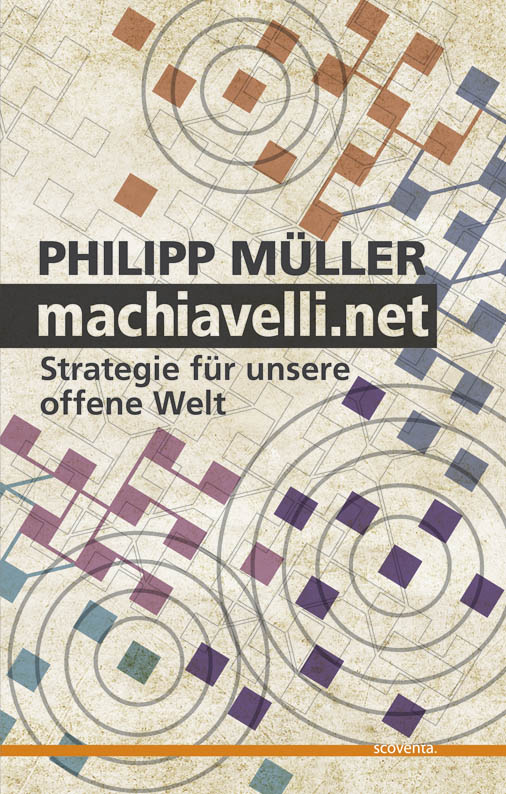Culture, Politics, and our Networked Lifeworlds
By: Philipp Mueller and Violetta Pleshakova
In 2010, it has become a truism that culture, lifeworlds, and our political economies are transforming. It is obvious that the Web is impacting society, bringing in new lifestyles, attitudes, values, work patterns and relationships – it is now even officially (unofficially) nominated for the Nobel Peace Prize. As the Internet for Peace Manifesto states,
We have finally realized that the internet is much more than a network of computers. It is an endless web of people. Men and women from every corner of the globe are connecting to one another, thanks to the biggest social interface ever known to humanity.Digital culture has laid the foundations for a new kind of society. And this society is advancing dialogue, debate and consensus through communication. Because democracy has always flourished where there is openness, acceptance, discussion and participation. And contact with others has always been the most effective antidote against hatred and conflict.That’s why the internet is a tool for peace. That’s why anyone who uses it can sow the seeds of nonviolence. And that’s why the next Nobel Peace Prize should go to the net. A Nobel for each and every one of us.
Wide-ranging opportunities for peer production, low transaction costs of participation and prominence of non-instrumental and non-material motivations can potentially transform the social world into more creative, collaborative and active (see Lessig 2008, Shirky 2009, Benkler 2006). Due to this interplay of factors the social reality is transformed from a Read-Only world to Read-Write world. In the latter, people shift from being passive consumers to acting as enthusiastic creators. As argued by Shirky, “revolution doesn’t happen when society adopts new technologies – it happens when society adopts new behaviors” (2009, p. 160). Technology, however powerful it might be, cannot master the change alone. Technology has to be adopted and used by people, only then it can become ubiquitous and embedded in the everyday reality of society.
Although we witness a plethora of new digital phenomena on a daily basis, we are still lacking an overarching framework to think how these new technologies will transform our cultures, politics, our lives, and even personalities. This understanding and reflection occurs “on the go”, as we are forced to react to change and as we try to craft it. We face numerous questions along the way as technologies shape our lifeworlds and our lifeworlds shape our cultures and politics.
Culture, Lifeworlds, and Politics
Culture is a set of shared attitudes, values, goals, and practices that characterizes an institution, organization or group. Georg Simmel defined the concept as “the cultivation of individuals through the agency of external forms which have been objectified in the course of history.” Lifeworld is the social scientific term that reminds us of the incommensurability between academic description and the human experience social life. It is a term that asks us to think culture not only through the systemic perspective of the outside observer, but to hermeneutically engage with the subjects of our objects of analysis. As Habermas (1984: 117) conceptualizes it,
society is conceived from the perspective of acting subjects as the lifeworld of a social group. In contrast, from the observer’s perspective of someone not involved, society can be conceived only as a system of actions such that each action has a functional significance according to its contribution to the maintenance of the system.
Politics is the concept that deals with questions that are described as questions of choice for collectivities (Bartelson 2001; Anderson 1983). It can be circumscribed by the terms community and authority that can be ostensibly related to the questions “Who is member?” (the question of community or identity) and “who gets to decide?” (the question of authority).
From Read-Write to Read-Only and to Read-Write Reloaded
The concept of Read-Only (RO) and Read-Write (RW) was proposed by Larry Lessig in his book “Remix” (2008). As he suggested, human culture has for many centuries existed in Read-Write format, where one would not only perceive, but also create and change the culture. Culture was read-write ever since homo sapiens discovered her ability to paint, play music, and sculpt figurines such as the Venus of Schelklingen in the Swabian Alb 40.000 years ago. As stated in Wikipedia, the ultimate collaborative project:
The Swabian Alb region has a number of caves that have yielded mammoth ivory artifacts of the Upper Paleolithic period, totalling about twenty-five items to date. These include the lion-headed figure of Hohlenstein-Stadel and an ivory flute found at Geißenklösterle, dated to 36,000 years ago.[1] This concentration of evidence of full behavioral modernity in the period of 40 to 30 thousand years ago, including figurative art and instrumental music, is unique worldwide and Conard speculates that the bearers of the Aurignacian culture in the Swabian Alb may be credited with the invention, not just of figurative art and music, but possibly, early religion as well.[2][3] In a distance of 70cm to the Venus figurine Conard’s team found a flute made from a vulture bone.[4]
It was only the 20th century that has shifted the paradigm of cultural development to Read Only – a culture, where individuals are only consumers.
There are some technological reasons for the shift to RO that took place in the 20th century. Such inventions as phonograph, TV, radio, CD, VHS, DVD enabled wide distribution of culture products and established the principle of delivering culture to people packed in copies. A TV provides a copy of a talk-show. A CD provides a copy of a song. A DVD provides a copy of a film. If in the previous centuries culture was distributed freely and cultural products were easily built upon (like fairytales, told by people to each other without being written down and with possibility to add or change details; like folklore music, sang by people in private circles and on holidays, composed by nobody in particular and by everyone in general), the 20th century technologies have emphasized and boosted up the growth of copyrighted culture, provided in fixed and unchangeable form.
Now, in the 21st century, the world has the chance to go back to RW culture and creativity (Lessig 2008, p. 252), but on steroids. Read-Write combined with the power of a global broadcasting platform. The logic of active participation renders obsolete the image of an individual, nurtured by the pop culture of the 20th century: the image of a consumer. The tools for this shift are provided by the new Web, which favors free creation, voluntary project commitment and collaborative effort; where simple users can become active netizens (Zittrain 2008, p. 161). Through its participatory effects, the new Web fosters the reality of active creation, not passive consuming. Today people “are gratified in significant ways by the ability to play an active role in generating content, rather than only passively consuming that which is created for them by others (Harrison and Barthel 2009, p. 157). There is “substantially less dependence on the commercial mass media of the twentieth century” (Benkler 2006, p. 9). As the costs for participation in the new Web fall and as the complexity of handling technologies decreases, more and more individuals are empowered to become co-creators of our cultures and can have their voice heard. This, however, necessitates also a new way of critical listening.
An Attack on Professionalism
This results in the rise of an amateur culture. In the new Web it is not necessary to pay professors and experts to start an encyclopedia – instead, it is easier to harness the potential of individual knowledge, as Wikipedia did. It is not necessary to pay professional photographers to obtain pictures of a certain event – pictures of nearly everything are available for free and are easily searchable in folksonomies on free photosharing websites like Flickr. It is not necessary to buy expensive machines and spend money on marketing campaigns and personnel to create a newspaper – everyone can be a press outlet of his own with the use of blogging platforms since today “the mass amateurization of publishing undoes the limitations inherent in having a small number of traditional press outlets” (Shirky 2009, p. 65). It is not even necessary to turn on TV to get updates on burning news – livestream of first-hand information is available on Twitter and blogging websites. Similar limitations are destroyed in other spheres.
As a result, professional culture is challenged. A professional is a member of a vocation founded upon specialized educational training, who does not need supervision. Think of doctors or lawyers as classical examples. As a patient, you need to trust your lawyer or doctor, because there can be no absolute proof of her quality, therefore, she needs to convince through secondary attributes (being well-dressed, a fancy office) and/or professional codes of honor. Being member of a profession of course is always exclusive and normally connected to better-than-average incomes. With the democratization of tools of the trade professionalism is under attack.
Firstly, it is not needed in the amount it was needed earlier. As statistics shows, traditional media are suffering losses, laying down the personnel and generally loosing the competition to online media, including the ones run by amateurs (see Keen 2008). Secondly, professionals are not considered as reliable as before. If information, cultural products and meaningful content can be provided in the same (if not bigger) amount, faster and easier than before, there remains little ground for professional culture to preserve its monopoly.The result is the formation of more diverse, more vibrant, more active social universe. Remix culture of improving, changing, sampling, mixing derivative works aspires to replace the culture of permission, that existed before.
Learning to Trust
The new Web stimulates active engagement of people, impacts their lifeworlds and leads to “the rise of effective, large-scale cooperative efforts – peer production of information, knowledge, and culture” (Benkler 2006, p. 5). This active engagement expands the limits of our experience of culture and politics – it changes individuals that participate. Most of us remember the night when we moved from Read-Only to Read-Write, for some it is an experience similar to a first date or to first driving a car – it might be writing for Wikipedia, posting photos on Flickr or rating links on Digg, with each and every click a person does in the modern Web, he or she is adding value to the community. Voluntary entries in Wikipedia have helped to build the world’s most consulted encyclopedia within a very short time span. Ratings of goods on Amazon.com help other consumers to select products and learn about items in categories they are interested in. Tagging photos on Flickr or music on Last.fm helps other people to find what they are looking for.
Distributed Leadership
It has to be acknowledged that this type of production is not dramatically new, since people were getting together to produce collectively since primordial times. However, only Internet technologies have made the work flow of this type of collective action easily manageable and allow cooperation across both space and time. It means we need different leadership skills, leaders that have the ability of “convincing people who care a little to care more” (Shirky 2009, p. 181), leaders who can design open processes and engage distributed collaborators to contribute little pieces to bigger projects. Web technologies enable the decrease of transaction costs of production and participation. Humans make them happen.
 Author of machiavelli.net, proud father of three, interested in shaping network society. Welcome to my blog.
Author of machiavelli.net, proud father of three, interested in shaping network society. Welcome to my blog.